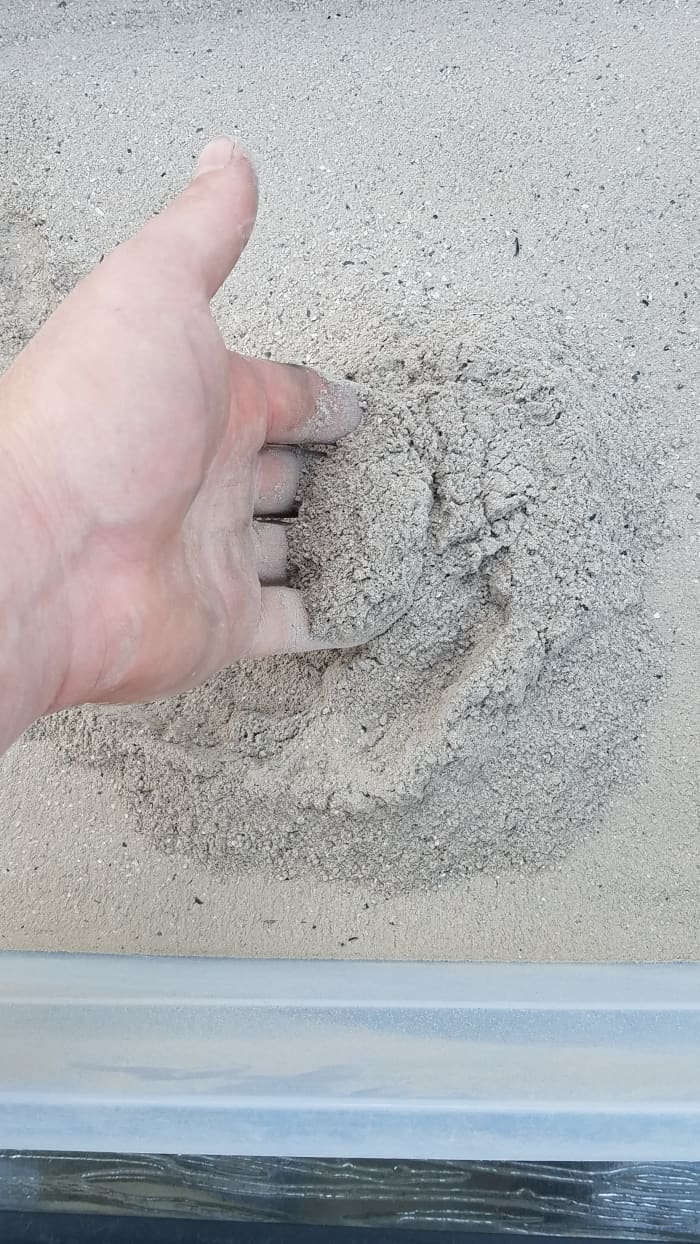Better Homes & Gardens Mission Wood Arm Futon Wash
Being a freelance writer for 6+ years, Billy has interest and knowledge in a wide range of topics.

What can you do with ash wood in your home?
Do you have a bunch of wood ash built up in the fireplace? Did you know there are many wood ash uses?
Maybe you have a garden and have heard about this trend of wood ash as a soil amendment for increasing pH levels and adding nutrients? This article helps shine a light on some of the common uses for wood ash in the home and garden.
Disclaimer: If collecting wood ash for yourself from a fireplace, always ensure embers are cool. If embers are still hot, store them in a fireproof container with a lid, such as a metal bucket. Enclosing it with a lid will choke out the embers. Remember, you want to use the ashes, not the flames in your garden.
List of Wood Ash Uses
In this article, you will find the following wood ash uses:
- In the Compost
- Garden Fertilizer
- Making Old Fashion Lye Soap
- Lye Water
- Pest Control
- Reducing Plant Diseases
- Add Calcium to Plants
- Plant Frost Protection
- Fertilizing the Lawn
- Polishing Silver
- Melting Ice
- Remove Odors
- Removing Stains
- Ant Deterrent
What Is Wood Ash?
This is a common question, but a very simple answer. Wood ash is the byproduct left after burning wood. This can be in the fireplace or in a fire pit. The ash that remains can be used for many purposes and is commonly used in the garden.
Organic wood ash refers to the ashes of wood only, without other types of contamination from products, such as plastics, chemicals, etc.
How Do You Prepare Wood Ash to Use?
| Purpose | Method |
|---|---|
| Composting | Simply add cooled ashes and embers to the compost pile. |
| Garden Fertilizer | When used as soil amendment, mix ash into the soil. A sifter can be used to separate ash from embers (which can be used as mulch on top). |
| Soap Making | Often requires making lye liquid and added to fats or oils. |
| Creating Lye Water | Adding wood ash to water. |

Why use wood ash as fertilizer?
Why Use Wood Ash Fertilizer?
Potassium Deficiencies
For plants to be healthy, they require a good level of potassium to produce good yields of flowers or fruits. Using wood ashes can help if your plants are low on potassium as a soil amendment.
To diagnose a potassium deficiency within your plants, look for discoloration on the edge of the leaf and browning.
If you find that plants have a potassium deficiency, adding wood ash to the soil increases the potassium levels, while providing various other nutrients (magnesium, calcium, and phosphorus).
Note: You should always test the soil before adding soil amendments, as there is the potential of symptoms resulting from disease or the lack of another nutrient.
Correcting Overly Acidic Soil
Have you tested your soil or spotted signs of acidic soil in your garden? Because wood ash has a similar affect as adding lime to your soil: it can be used to lower the soil acidity levels. Not only can it be used for gardens, but on the lawn, shrubs, and ornamental flowers.
While some plants can survive in acidic soils, many do best in an alkaline to neutral soil, such as greens (arugula, collards), artichokes, and the brassicas family (broccoli).
Note: Adding wood ash will increase the soil pH levels. You want to test pH levels prior to adding wood ashes to avoid soil becoming too alkaline.
Avoid adding wood ash on plants that thrive in acidic soil, including:
- Blueberries
- Strawberries
- Raspberries
- Fruit trees
- Parsley
- Potatoes
- Azaleas
- Rhododendrons
Read More From Dengarden
Reducing Pests and Plant Diseases
For plants that prefer alkaline soil, you can use wood ash to deter pests by applying cooled, untreated wood ash straight to the garden soil.
Additionally, you can add wood ash to the compost pile, keeping pests out while adding nutrients to the compost.
Use against:
- Root maggots (onions and cabbage)
- Snails
- Slugs
Club Root Disease
Because wood ash increases the pH level as mentioned above, it can help against certain plant-based diseases. For example, club root disease is common in the brassica family (cauliflower and broccoli) because of the lower pH levels. By increasing these levels with wood ash, it can eliminate potential for club root disease.

How to Use Wood Ashes in Your Home and Garden
1. Enriching Compost
When using wood ash in the garden, a little goes a long way. If you have more than you can use, adding it to the compost pile is an option.
When adding organic wood ashes to the compost, it helps to keep the pH levels neutral, because decomposing materials may turn acidic over time. Wood ash works by offsetting this, as it is more alkaline. It also adds additional nutrients.
2. Repels Garden Pests
When being used for repelling garden pests, wood ash keeps things organic. It can be used in the garden to keep pests such as slugs and snails away from your plants, or by creating a mixture and using on treated wood or other areas.
To make a mixture that easily sprays on plants or objects, simply allow the wood ash to soak in water for several days to one week. The container should be glass or plastic and sit in the sun to steep.
Another way to increase the potency as a pest repellent is by adding pepper flakes or hot pepper oils to the mixture. Once ready, spray on wood objects, the ground, or areas you want to keep insects away.

3. Adding Calcium to Plants
Plants need calcium too, not just humans.
Although soil often contains calcium, being the fifth most abundant element in the soil, it is often not the right form for plants. Typically, calcium deposits are found in the form of sedimentary rock, such as limestone or marble.
There are various soil amendments available to provide plants with the needed amounts of calcium. Wood ash fertilizer is a lesser known, but great calcium source for plants.
4. Assisting With Plant Frost
Unexpected frost coming your way? When temperatures drop, sprinkle wood ashes over the plant leaves. This gives them an extra layer of protection and helps guard against unseasonably cold temperatures.
5. Fertilizing the Lawn
Because wood ashes contain various nutrients, it is a great lawn and garden soil amendment. It contains potassium and calcium, making it a substitute for lime when pH levels need to be increased.
When adding limestone, the soil pH can take months to change. However, wood ash is water-soluble, meaning the pH level will change more rapidly.
When adding wood ash as a substitute for limestone, apply twice the recommended amount. Avoid using near acid-loving plants (azaleas, blueberries, etc.).
Always test the soil prior to using amendments. The optimum pH range for lawns and gardens is between 6.0 and 6.5. If your soil is between this range, you can apply up to 20 lbs. of hardwood ashes per 1,000 sq. feet each year without a significant pH increase.
Common Uses for Wood Ash in the Home
1. Old Fashioned Handmade Lye Soap
Ever wanted to make your own old fashioned lye soap? It is done by combining animal fat and lye water.
Lye water is created from adding wood ash to soft water, then boiling it. This creates potassium hydroxide.
It is recommended to study the process prior to attempting it. Making lye soap can be dangerous.
2. Polishing Silver
Wood ash can be used as a mild abrasive, good for polishing silver, glass, and other dull metal objects. In addition, it can help remove water spots from wood furniture.
Avoid harsh and expensive polishing products by using wood ash and water. Here's how:
- Get your rubber gloves (when wet, wood ash can easily eat through aluminum).
- Take one cup of wood ash, add a small amount of water to develop a thick paste.
- Spread the thick paste on the object.
- Let it sit a few minutes.
- Wipe off using a soft cloth. Microfiber works well, as it is designed to dry and pick up dirt.
- Use a clean cloth to rub for an amazing shine.
3. Melting Ice in Winter
During icy weather, use wood ashes rather than salt on steps and walkways. Much like salt, it will help melt the ice and provide better traction, without corroding surfaces like the former.
In addition to not being corrosive, wood ash is pet friendly and does not harm the paws of cats and dogs when walked on. It is also environmentally friendly and enhances soil at the same time.
4. Removing Odors
Wood ash is great at absorbing odors and helps homeowners avoid using chemical-based fresheners. It can also be placed in the refrigerator, instead of baking soda.
It's also great for reducing odors in trash cans and litter boxes. For best results, replace ashes once or twice a week.
5. Removing Stains
If you have stains on concrete, cement, stone or asphalt, wood ash can be used to reduce or remove them. For example, grease or oil spots on the driveway.
Simply use an old cloth to rub the wood ash over the stain. Then, sweep the ash up. Repeat as necessary.
6. Getting Rid of Ants
If you find an ant problem in your yard, you can easily get rid of them with wood ashes. Simply pour a little down their ant hill and wait.
The reason this works is because ants are unable to move the wood ash away from their nest. This causes them to relocate.
This content is accurate and true to the best of the author's knowledge and is not meant to substitute for formal and individualized advice from a qualified professional.
© 2018 Billy Haynes
Billy Haynes (author) from Paragould, AR on February 11, 2020:
Thank you. :)
Nisha on February 10, 2020:
Very informative
Better Homes & Gardens Mission Wood Arm Futon Wash
Source: https://dengarden.com/home-improvement/Common-Uses-for-Wood-Ash-in-Home-Garden
Posted by: bivenscovest.blogspot.com

0 Response to "Better Homes & Gardens Mission Wood Arm Futon Wash"
Post a Comment